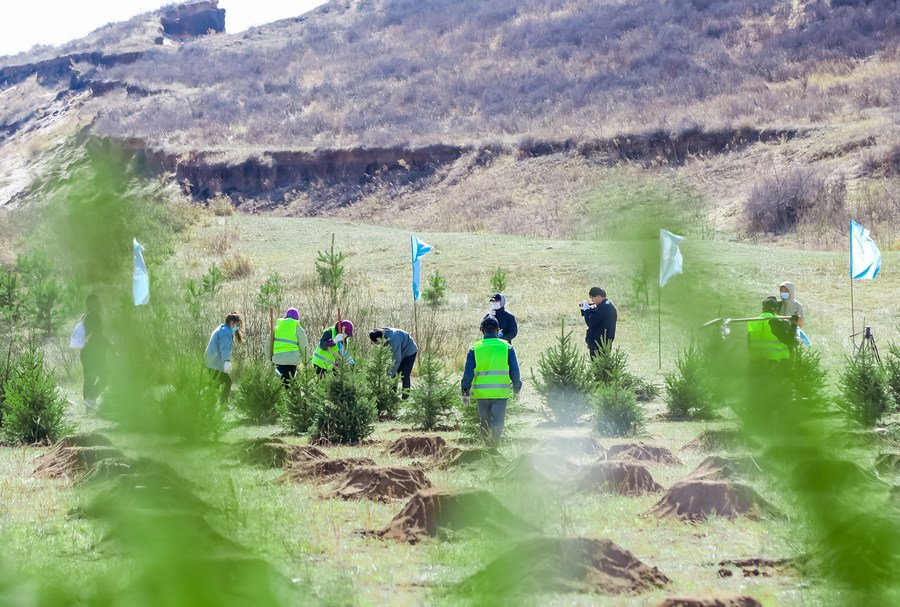Turning deserts into forests: How China is helping the world go green

Volunteers plant trees in the Hunshandake Sandland, north China's Inner Mongolia Autonomous Region, April 22, 2023. (Xinhua/Li Yunping)
BEIJING, June 7 (Xinhua) -- China has made sustained efforts to combat desertification over the years, putting the brakes on desert expansion and contributing to global ecological conservation.
During the 2012-2022 period, China's accumulative afforestation area reached 960 million mu (64 million hectares), while 165 million mu of grassland was improved, and more than 12 million mu of wetlands were added or restored, official data showed.
From encouraging public participation to implementing policy measures, the country has taken effective and practical steps to curb desertification, turning barren soil into forests and grasslands.
China designated March 12 as National Tree Planting Day in 1979, and Chinese citizens voluntarily planted approximately 78.1 billion trees between 1982 and 2021 across the vast country, official data shows.
The country's policymakers have also launched various greening projects, targeting areas where deserts have threatened the local ecological environment and narrowed people's living space.
The Three-North Shelterbelt Forest Program (TSFP), a large-scale afforestation project, is a good example. Launched in 1978 and scheduled to be completed in 2050, it has already helped safeguard the land inhabited by people in the northwest, north and northeast of China.
Under the program, an approximate total afforestation area of 31.74 million hectares had been designated and conserved by the end of 2020. It has effectively curbed the expansion of desertification and become a "green Great Wall" preventing sandstorms, conserving water and soil, and safeguarding agriculture.
During the 2000-2017 period, China contributed to a quarter of the increase in global green leaf area, and the TSFP was a major contributor. The project has been called a successful example for global ecological governance.
In addition to launching major greening projects, China has moved to improve relevant laws and explore new techniques to bolster its sand control credentials.
Over several decades, the country has enacted laws to prevent and control desertification. Such laws include the world's first to tackle desertification and a ban on natural forest logging, building a green barrier in China's legal system.
Also behind the country's remarkable green achievements are advances in afforestation and sand control technologies. In Minqin, a county between two deserts in the northwestern province of Gansu, greening methods such as drip irrigation and sand barriers have helped increase local forest coverage from 11.52 percent in 2010 to 18.28 percent currently.
"China has become a world leader in sand control technologies," said Liu Hujun, director of the International Cooperation Center of the Gansu Desert Control Research Institute. Since the 1990s, Liu's institute has helped train nearly 1,000 technicians and government officials from 87 countries.
As a responsible stakeholder in the global community, China has actively fulfilled its obligations under the United Nations Convention to Combat Desertification, carried out exchanges and cooperation with Belt and Road countries, and established an international knowledge management center for desertification prevention and control.
Alongside a recent pledge to promote international communication and cooperation to curb desertification, China's policymakers urged efforts to participate in global efforts to control desertification, support sand control in Belt and Road countries, and facilitate policy dialogues and information sharing among different countries.
Moving forward, the world's second-largest economy remains determined to blaze an eco-friendly trail for global green development.
By 2025, China will have a total of 2 million hectares of desertified land sealed off for protection, with more than 6 million hectares of sandy land newly treated and 1.3 million hectares of rocky-desertification land harnessed, according to the National Forestry and Grassland Administration.


